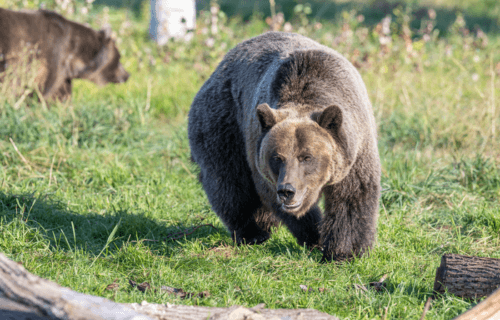PULLMAN, Wash. —Winnie the Pooh’s real-life cousins could hold the key to beating diabetes, according to new research. Scientists with Washington State University say a bear’s hibernation cycle has a unique ability to regulate insulin, even as the bears sleep for months.
A sugar-rich diet is the main trigger for the metabolic disorder in humans. It is the result of resistance to insulin, a hormone that controls glucose.
However, the big, furry mammals can turn it on and off — almost like a switch. Now, scientists have found their secret, a particular set of “hibernation proteins.”
The team narrowed down thousands of changes in gene expression to eight, specifically. Researchers made the discovery by feeding honey, Pooh’s favorite food, to hibernating bears.
“There seem to be eight proteins that are working either independently or together to modulate the insulin sensitivity and resistance that’s seen in hibernating bears,” says Joanna Kelley, a WSU evolutionary geneticist and corresponding author of the study, in a media release. “All of these eight proteins have human homologues. They’re not unique to bears. The same genes are in humans, so that means maybe there’s a direct opportunity for translation.”
A mid-hibernation snack reveals how insulin regulation works
Researchers looked at changes in cell cultures exposed to blood serum drawn from grizzlies housed at the WSU Bear Center. They collected samples during active and hibernating seasons, including one cycle that the team interrupted by giving the bears water laced with honey.
Different cocktails highlighted the genetic alterations. It was serum from the mid-hibernation feeding period that helped most in identifying the important proteins.
“By feeding the bears just for two weeks during hibernation, it allowed us to control for other things like daylength and temperature as well as food availability,” Kelley says.
Bears usually get up and move a little during hibernation, but do not eat, urinate, or defecate. Study authors used these waking moments to offer them the treat. The extra sugar disrupted hibernation behavior, enabling this first study of its kind.
When the serum was put onto a cell culture taken from regularly hibernating bears, they began to exhibit changes in gene activity similar to those from an active season. Prof. Kelley and colleagues plan to investigate how the proteins work to reverse insulin resistance.
Mapping the bear genome offers hope of a cure
The findings may ultimately lead to the development of therapies that prevent, or even cure, diabetes.
“This is progress toward getting a better understanding of what’s happening at the genetic level and identifying specific molecules that are controlling insulin resistance in bears,” explains Blair Perry, the study’s co-first author and a WSU post-doctoral researcher.
Tools for understanding genetics are becoming more sophisticated. The researchers recently mapped the complete DNA of brown bears, of which grizzlies are a member. The updated genome may help provide even better insights into bear genetics including how they manage hibernation.
“There’s inherent value to studying the diversity of life around us and all of these unique and strange adaptations that have arisen,” concludes Perry, who has also studied the genetic makeup of snake venom.
“By understanding the genomic basis of these adaptations, we gain a better understanding of what we share with other species, and what makes us unique as humans.”
The study is published in the journal iScience.
South West News Service writer Mark Waghorn contributed to this report.

Yes, check out how the bears, eat, 🐠 fish nuts berries honey naturally with out any preserves in their habitat of eating.etc